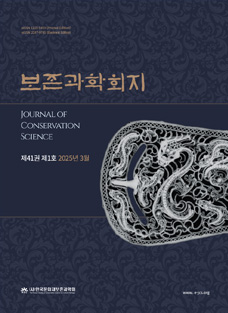Journal of Conservation Science Vol.26 No.3 pp.213-228
A Study of the Chemical Composition of Korean Traditional Ceramics (I): Celadon and Koryŏ Whiteware
한국 전통 도자기의 화학 조성에 대한 연구 (Ⅰ) : 고려청자와 고려백자
Carolyn Kyongshin Koh Choo,Woong Kil Choo,Sangdoo Ahn,Young Eun Lee,Gyu Ho Kim,Yeon Sook Lee
Abstract
The composition of Chinese ceramic shards has been the subject of analysis in Europe, beginning in the 18th century, and in China from the 1950s. Scientific studies of traditional Korean shards commenced in the United States and Germany in the 1980s, and studies within Korea began in the 1990s. From analysis of a large systematically collected dataset, the composition of porcelain produced during the Koryŏ dynasty, including 21 celadon and 10 whiteware groups, was characterized and compared with that of Chinese ceramics. The average composition of the body and glaze of several shards (usually three to five) from each group was determined, enabling comparisons between groups. The results show that the majority of groups were derived from mica-quartz porcelain stone, which was commonly used in Yuezhou, Jingdezhen, and other southern Chinese kilns. The composition of glazes includes clay and flux components; the latter were typically wood ash and limestone, initially as burnt but later as crushed forms. The earliest of the Kangjin glazes contained substantially less titanium oxide than did the Yuezhou glazes, which were typically formulated from body material and wood ash. The present study provides a comparative framework for the growing number of analytical investigations associated with excavations occurring in Korea.

 E-Submission
E-Submission 
 E-Submission
E-Submission 
![]() Journal Search Engine
Journal Search Engine




 KSC
KSC